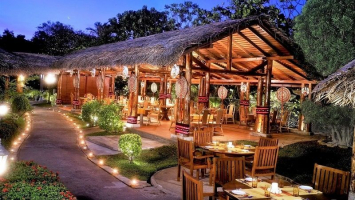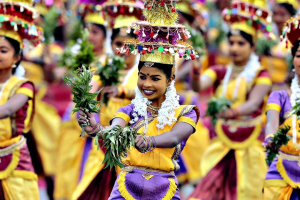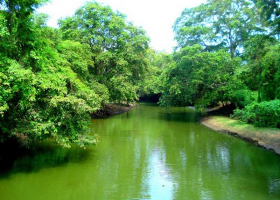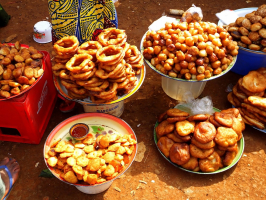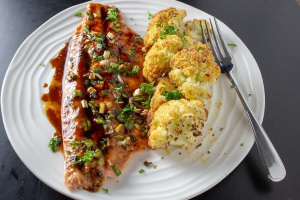Top 12 Best Foods In Sri Lanka
The Teardrop of India or Pearl of the Indian Ocean is one of Sri Lanka's many nicknames. But a more accurate description of the stunning country might be Rice ... read more...and Curry Island. Sri Lankan uses liberally local fruits, such as coconuts, jackfruit, seafood, and spice stock, to deliver an abundance of incredible dishes. Below Toplist will introduce some foods that you should not miss when visiting Sri Lanka.
-
As you would expect from an island in the Indian Ocean, seafood plays an important role in Sri Lankan cuisine. Fish ambul thiyal (sour fish curry) is one of the most popular of the many different fish curries available.
Fish – usually large, firm species, such as tuna – is cut into cubes, then sautéed with a mixture of spices including black pepper, cinnamon, turmeric, garlic, pandan leaves, and curry leaves. Perhaps the most necessary ingredient is dried goraka, a small fruit responsible for giving the fish its sour flavor.
Ambul thiyal is a dry curry, which means that all ingredients are boiled with a small amount of water and cooked until the liquid reduces. It allows the spice mixture to coat each chunk of fish.
Originating in southern Sri Lanka, it is available all over the country at restaurants that serve curries and is best eaten with rice.
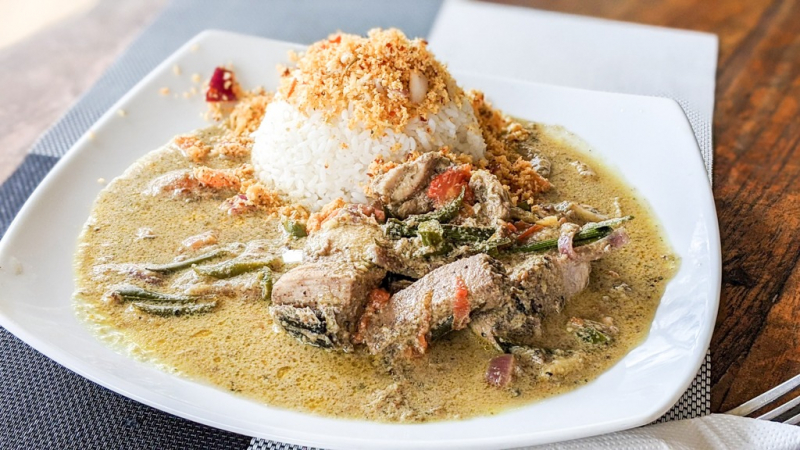
Fish ambul thiyal. Photo: cookingtoentertain.com 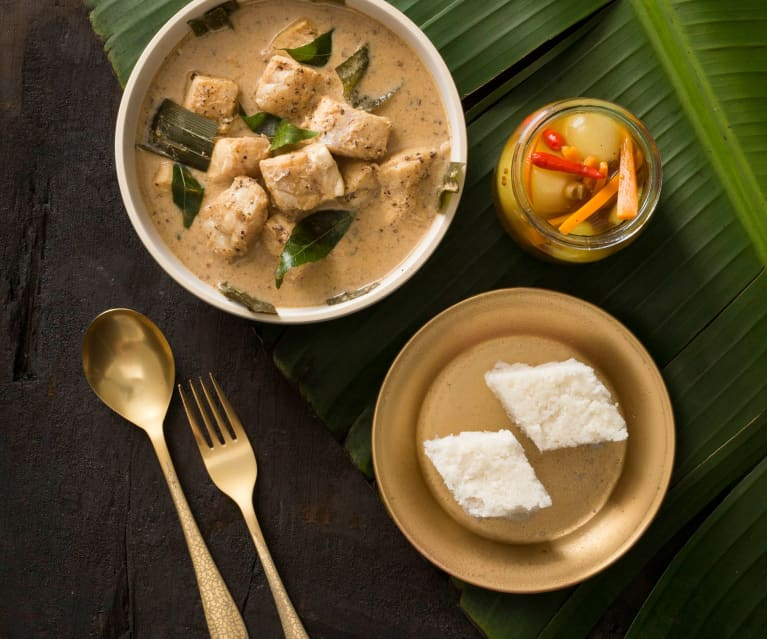
Fish ambul thiyal. Photo: cookidoo.international -
You cannot visit Sri Lanka and leave without eating Kottu roti (also spelled Koththu or Kotthu). It will be hard to avoid it anyway. If you stroll down a busy street in central Colombo late in the evening, you'll be greeted with the sounds of street vendors making kottu roti from far away, followed by the aroma of tantalizing meal that will make you hungry.
Kottu roti is made with a type of flatbread called "Godhambara roti" or "Godamba roti," which is shredded and then mixed with vegetables, meat, and eggs (or not, for vegetarian or vegan options) and aromatic spices and sauces. The mixture is then chopped and mixed on a large flat griddle with two large steel blades, creating the signature sound and stage of kottu roti making. This is the Sri Lankan version of “dubstep teppanyaki”!Kottu is served with a spicy curry sauce, which you can dip or drizzle over your entire plate.
Some of the most skilled kottu chefs have composed their unique songs, singing while they rhythmically slap spoons and knives against the metal frying surface, shredding the roti with each clang.
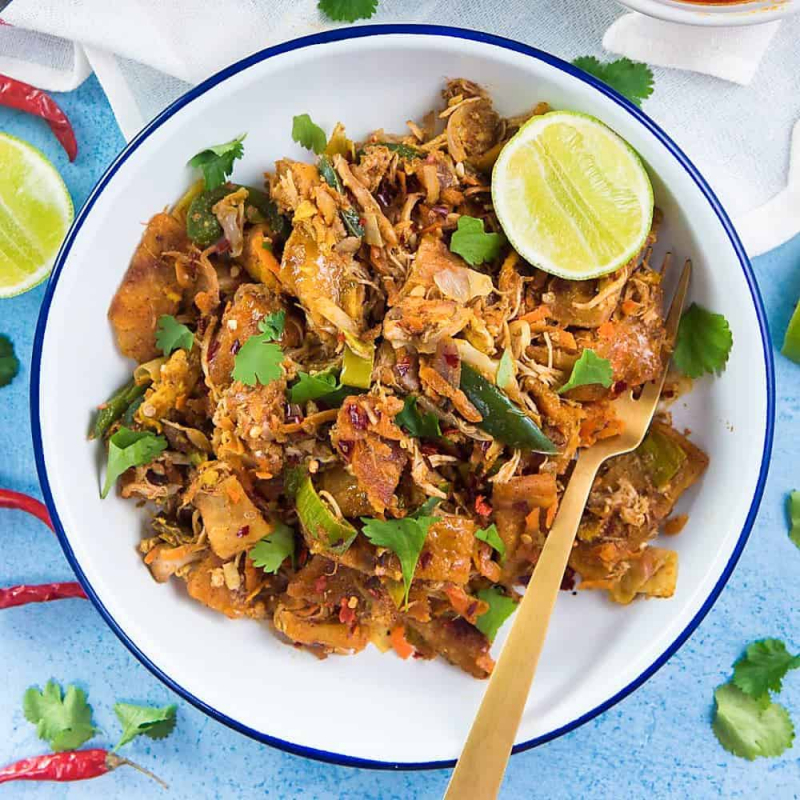
Kottu. Photo: theflavorbender.com 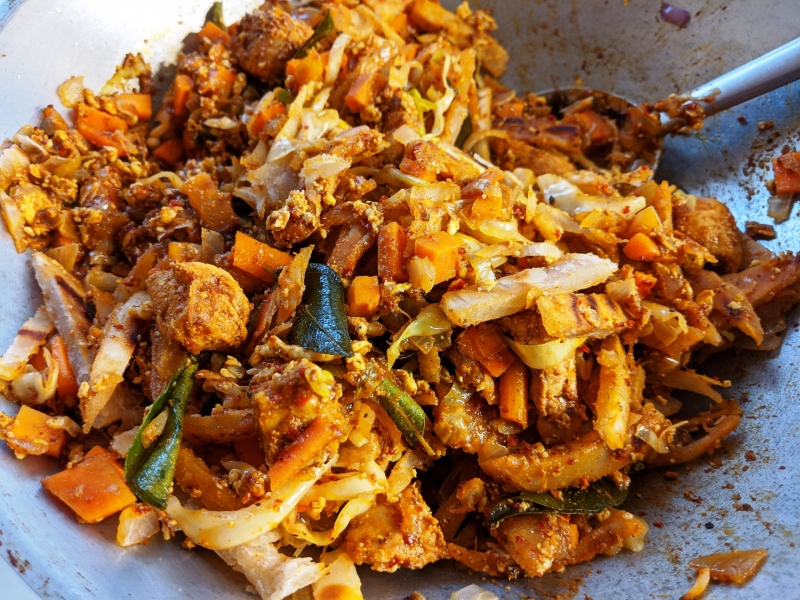
Kottu. Photo: thetinytaster.com -
Sri Lankan-style chicken curry, to be precise, Kukul Maas Curry, is made with spices commonly used in the region, such as cinnamon and cardamom, and the curry is made with thick creamy coconut milk.
Kukul Maas Curry is a traditional recipe from the Sinhalese cuisine, a popular family dish in Sri Lanka. There are many variations depending on the region and taste preferences.
Spices like cumin seeds, cardamom, cloves, and cinnamon sticks are aged in hot oil before combining with the chicken and spices like chili powder, curry powder, turmeric, pandan leaves, lemongrass, and leaves curry.
Coconut milk contributes to the rich curry sauce. Depending on the recipe, a tomato puree is usually included.
The chicken is stewed for about an hour until the essence of the seasoning is absorbed into the chicken. Most satisfying when served with hot rice and roti.
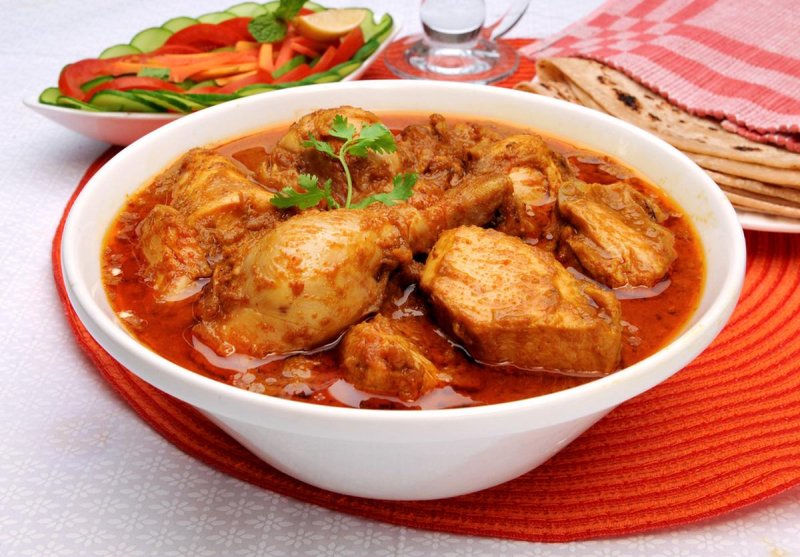
Kukul mas curry. Photo: worldfood.guide 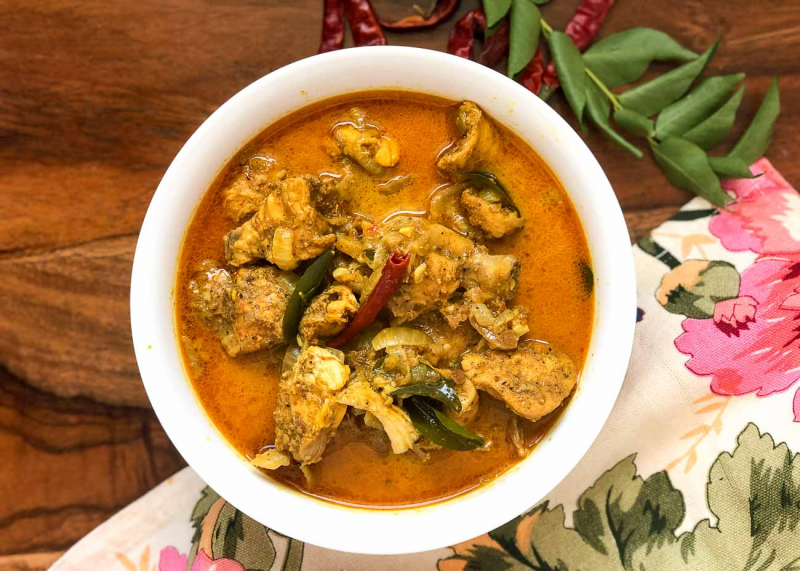
Kukul mas curry. Photo: archanaskitchen.com -
Parippu, or dhal curry, is the most popular Sri Lankan dish, a main dish in any restaurant or household. Served with piping hot rice, this dish is a delicate and easy balance of flavors that prepares the palate for an explosion of flavors in the ensuing dishes.
Parippu can be prepared in many different ways using different types of lentils. Using Green Gram (Moong Dal) or Split Pigeon Dal lentils, one can make a nutritious and beautiful dish with its simplicity.
Masoor dhal (split red lentils) is first washed and boiled until soft.
In a separate pan, several fresh ingredients, such as onions, tomatoes, and fresh green peppers, are sautéed and mixed with brewed spices like cumin seeds, turmeric, fenugreek, mustard seeds, and leaves curry.
All ingredients are combined and often thickened with a splash of fresh coconut milk to give the dish a rich flavor and creamy texture.
It comes with everything but is perfect as a dipping sauce for fresh roti or paratha.
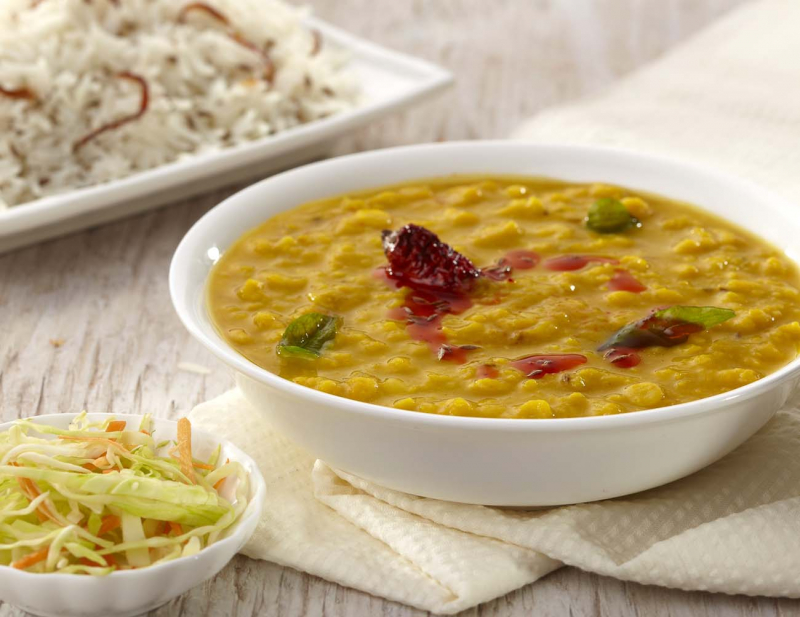
Parippu. Photo: rchanaskitchen.com 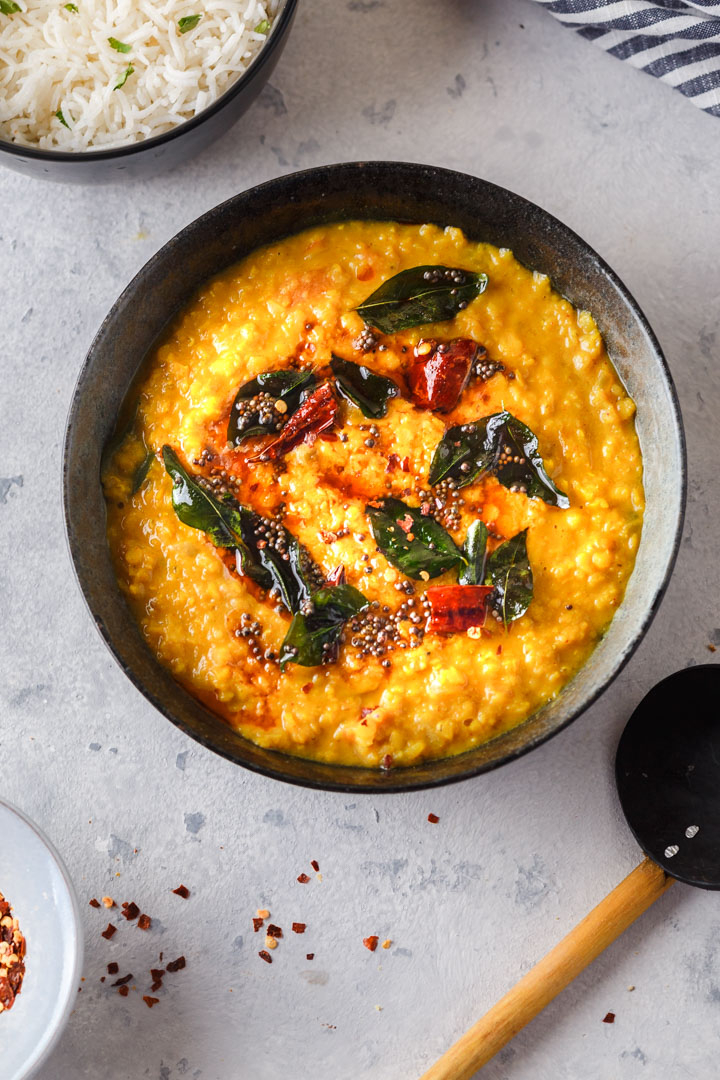
Parippu. Photo: loveandotherspices.com -
Sri Lanka has been influenced by a diversity of cultures. One of the most evident is the Dutch Burgher community. Lamprais, a combination of two Dutch words meaning "bun" and "rice," is a combination of meat, rice, and sambol chutney, wrapped in a banana leaf package and steamed. The rice is cooked with braised meat - usually a mixture of different meats such as beef, pork, or lamb - seasoned with cardamom, cloves, and cinnamon.
A tablespoon of rice is placed in the center of a banana leaf, along with mixed meat curry, two dishes of Frikkadel (Dutch-style beef balls), blachan (shrimp paste), and starch or vegetables, usually ash or quinoa.
The package is folded into a parcel and steamed. Since lamprais is a Burgher's contribution to Sri Lankan cuisine, the meat is often prepared with sweet spices such as cloves and cinnamon, recreating the flavors favored by the Dutch Burgher community.
Original recipes called for beef, pork, and lamb, but chicken and eggs are often included in a modern light pack.
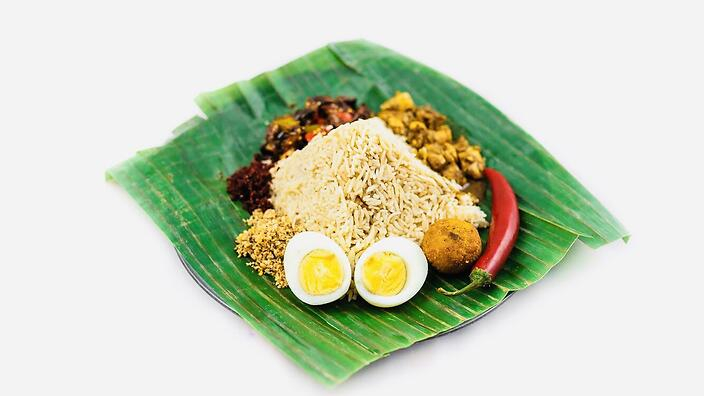
Lamprais. Photo: sbs.com.au 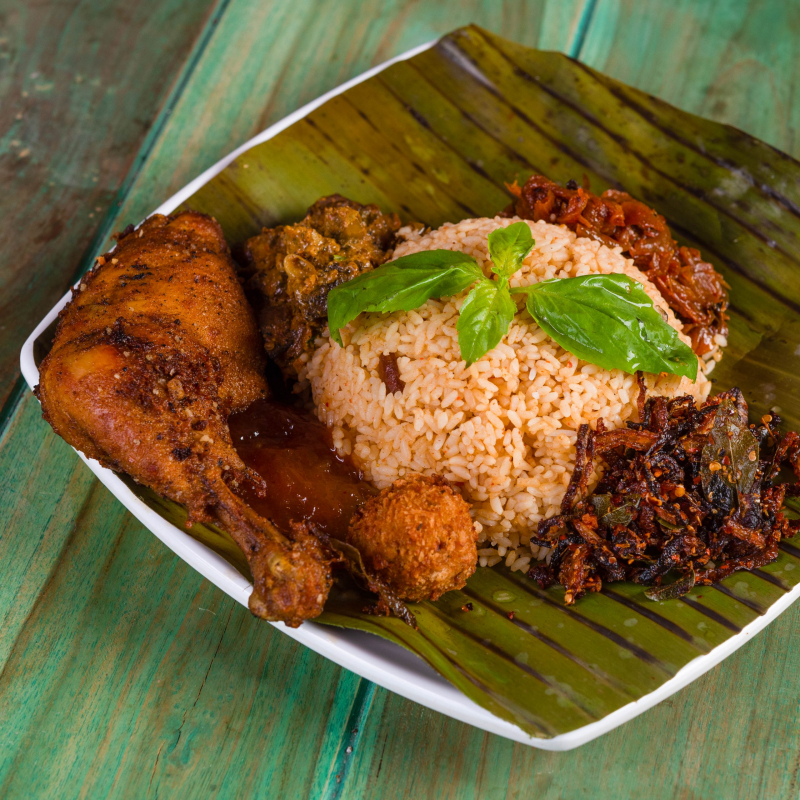
Lamprais. Photo: gihansrestaurant.lk -
Hoppers (or appam) are the Sri Lankan answer to pancakes. Hoppers are sticky rice cakes made from fermented rice and coconut (also known as hoppers) with a thicker, spongy filling. They have an ethereal sweetness, lightly crunchy on the edge and soft in the middle.
Traditionally, the hopper is made by soaking rice overnight and grinding it into a fine powder with cooked rice, fresh coconut, or coconut milk. It is fermented by toddy (a crude palm wine). You can also use baking soda instead.
Hopper varieties are cooked in a special appam pan called appam chatti. They are not common in the US. However, they are available online at stores like Amazon. A ladle of batter is fried in a pan and swirled around so that the dough comes out evenly. Hopper can be sweet or savory. But one of the locals' favorites is eggs hopper. An egg is cracked into a bowl-shaped pancake, creating the Sri Lankan version of an "egg in a hole."
Eggs hopper are garnished with lunu miris, an onion, chili, lime juice, and salt. Unlike the flowing powder used for the hopper, the chain hopper is made from thicker powder. The dough is pressed through a hopper machine, like a noodle press, to create thin, steamed noodles.
String hoppers are usually eaten for breakfast or dinner with curries.
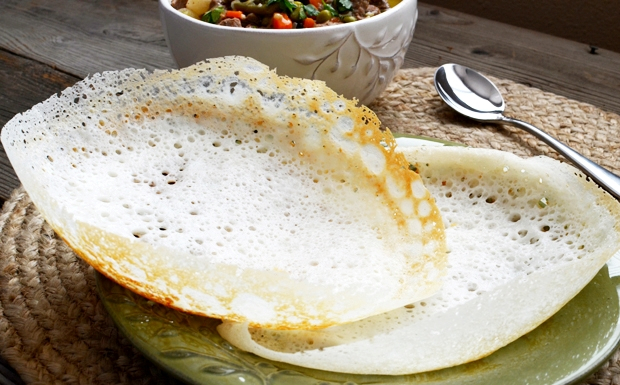
Hoppers. Photo: picturetherecipe.com 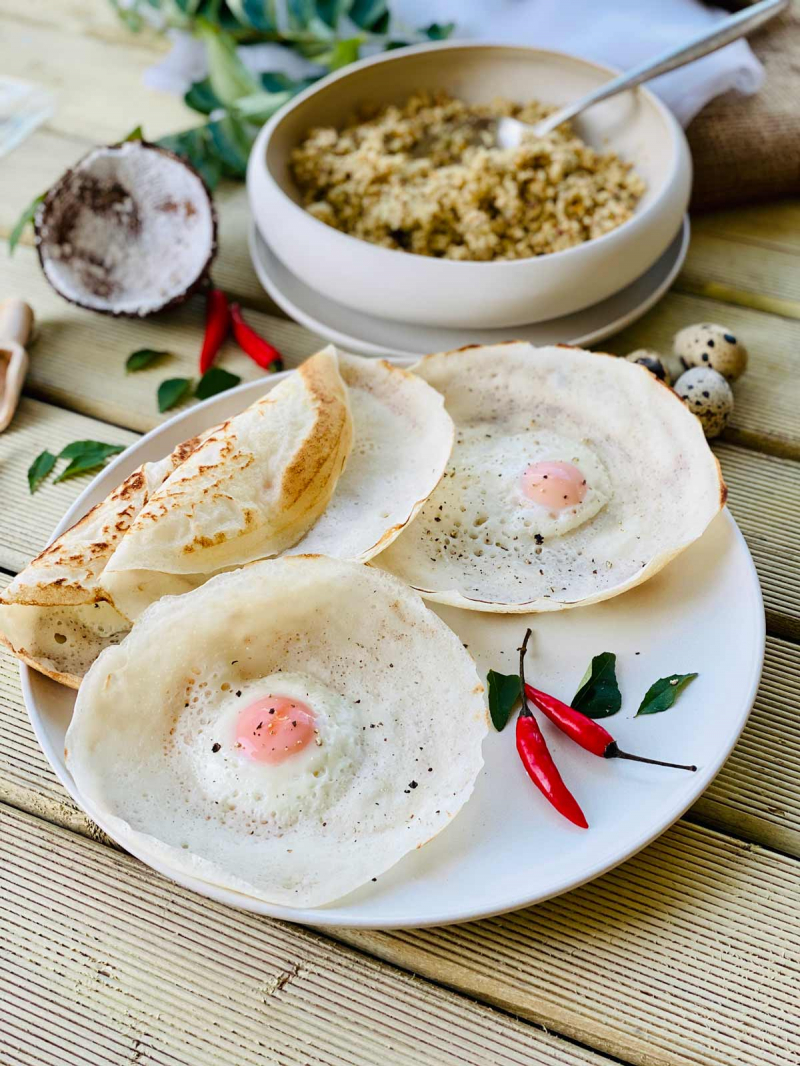
Hoppers. Photo: picturetherecipe.com -
Curry Polos are one of the most loved dishes in Sri Lankan cuisine due to the hard avoid taste. It is a Sri Lankan curry made from young, unripe jackfruit and has so much flavor. You won't even realize it's meatless! This curry is perfect for vegetarians, vegans, gluten-free people, or anyone who loves curries!
Mothers with newborn babies love to eat this curry, and they are lucky to get the nutrients in young jackfruit because Sri Lanka is endowed with these trees.
To make curry polos, cook a baby jackfruit with spices and coconut milk. In Sri Lanka, there are several different ways of cooking Polos curry. However, most of these polos recipes are essentially the same, although there are some differences in ingredients and the order of cooking.
Fruit cut into bite-sized pieces, boiled until cooked.
Then, it is cooked with onions, garlic, ginger, and spices, such as mustard seeds, turmeric, chili powder, roasted curry powder, pandan leaves, and curry leaves. The final step is to add the coconut milk and simmer to reduce most of the liquid, leaving all the flavor inside the jackfruit.
Jackfruit has a starchy texture, somewhat similar to tapioca or potato. Polos is a classic dish available at most Sri Lankan curry restaurants.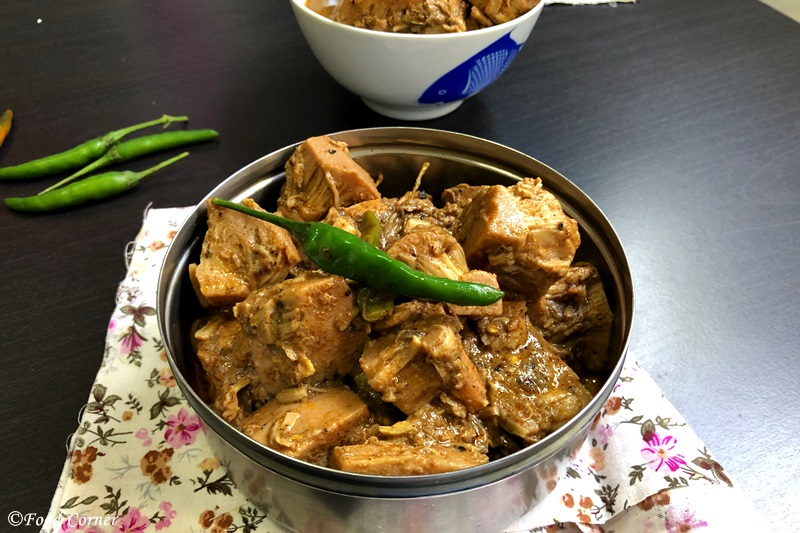
Polos. Photo: foodcnr.com 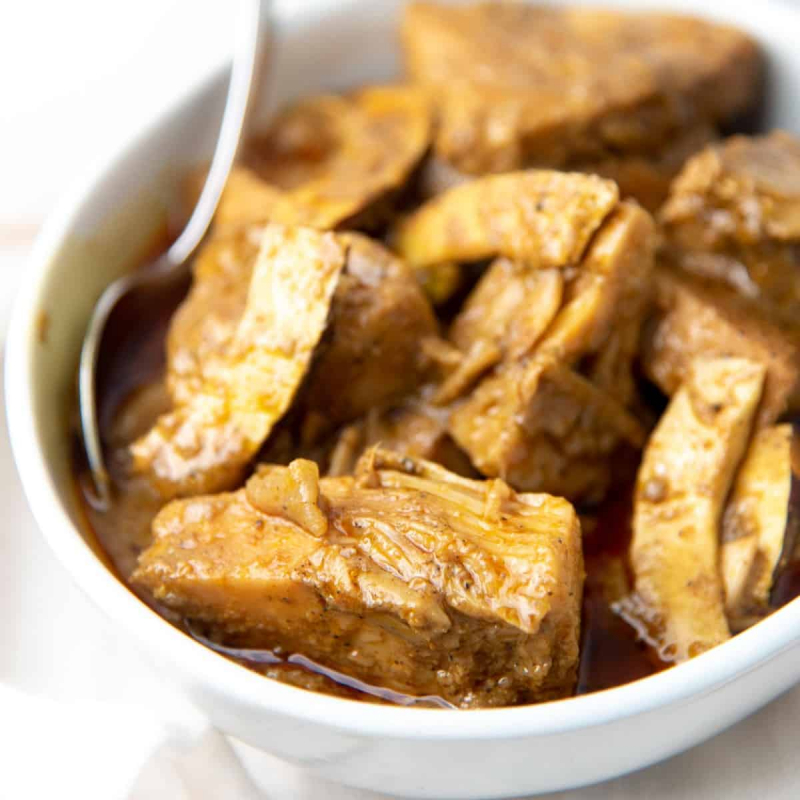
Polos. Photo: theflavorbender.com -
Wambatu moju, Fried eggplant, shallots, green peppers mixed with mustard vinegar to dip vegetables, creating a sweet and sour combo, refreshing. A delicious pickled eggplant dish suitable for your party table.
Brinjal pickles, or we call wambatu moju or batu moju in Sinhalese, adding a layer of flavor is pure joy to sink your taste buds. The combination of sweet and sour, the crisp taste of shallots, and the crunchiness of french fries are work well to give you this spicy pickled vegetable dish.
Eggplants - usually the ones with purple, long, thin skins - are cut into bite-sized pieces and deep-fried, giving the eggplant crunch a soft and silky inside.
It is then caramelized with a teaspoon of sugar, vinegar, red onion, green pepper, mustard seeds, chili powder, and a little turmeric powder until the color is almost black.
Take a bite, and the eggplant's soft and juicy texture will melt in your mouth - the slightly sweet, sour, and salty contrast is sensational.
You will have every chance to enjoy a sour brinjal curry if you ever set foot in a restaurant or home in Sri Lanka. This dish is a classic and features on most Sri Lankan menus.
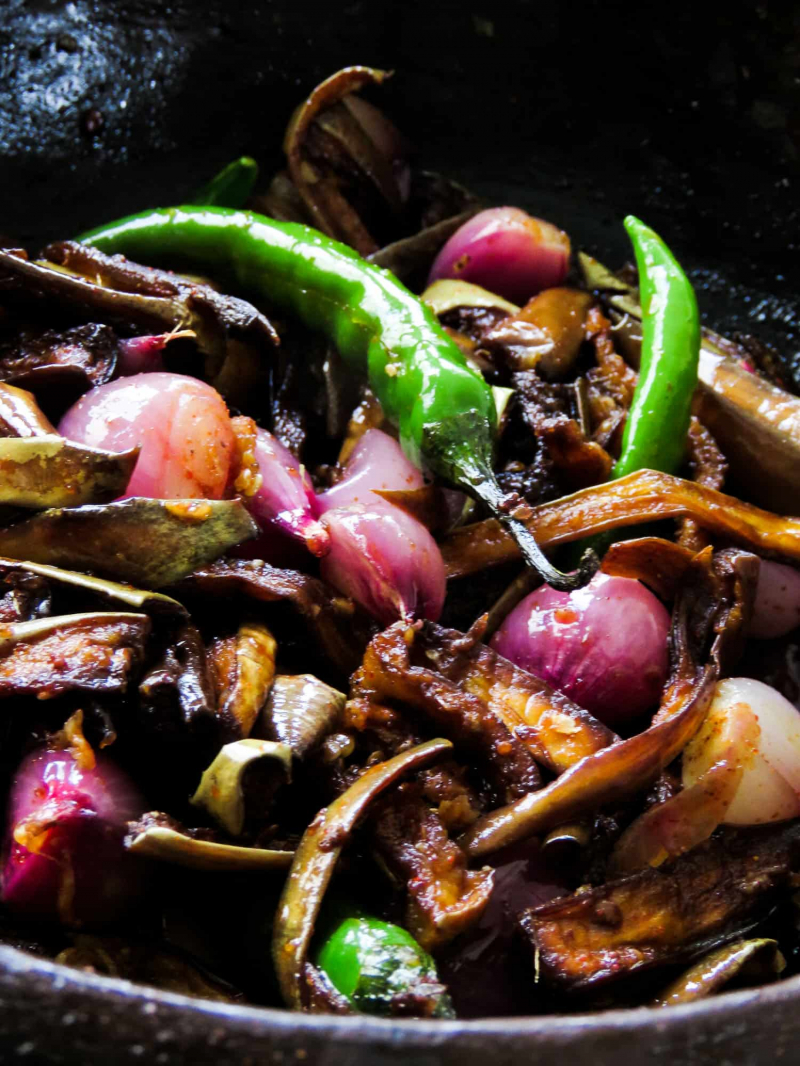
Wambatu moju. Photo: islandsmile.org 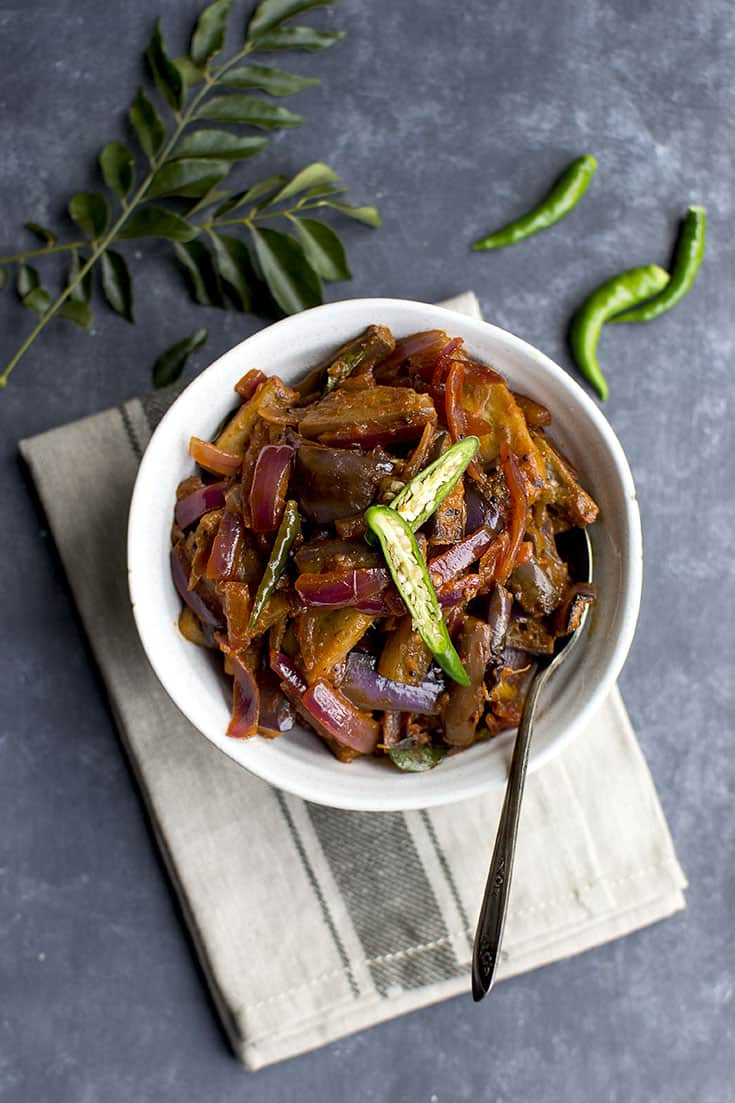
Wambatu moju. Photo: cookshideout.com -
Green salad with chopped Gotu kola and shredded fresh coconut will give you one of the healthiest salads in Sri Lankan cuisine.
Gotu kola is also known as Pennywort and can be added to any curry menu. This simple green salad idea is a vegan side dish that you can mix with rice and curries to give you an instant nutritious meal.
Gotu kola is an Asian herb. It is shredded, then combined with shallots, tomatoes, freshly grated coconut, and chili peppers and seasoned with a salt, pepper, and lime juice sauce.
Sambol is a term used in Sri Lanka, refers to ingredients that are combined and eaten raw, sometimes chutneys and sometimes salads, like Gotu kola sambol.
Gotu kola has a strong herbal flavor similar to kale, making it an extremely fresh and crunchy dish. It is usually a side dish served with curry and rice.
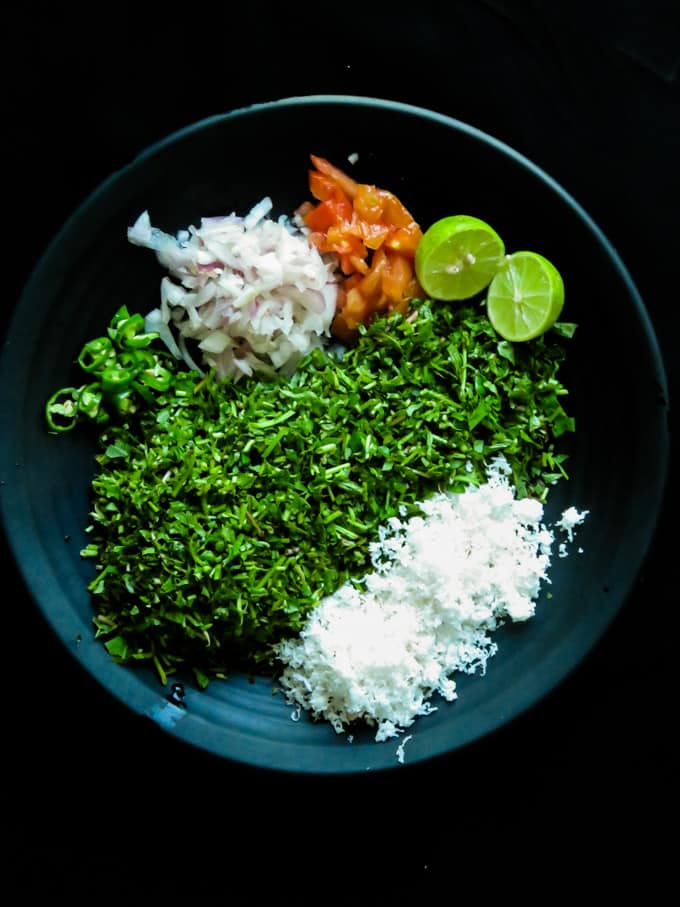
Gotu kola sambol. Photo: islandsmile.org 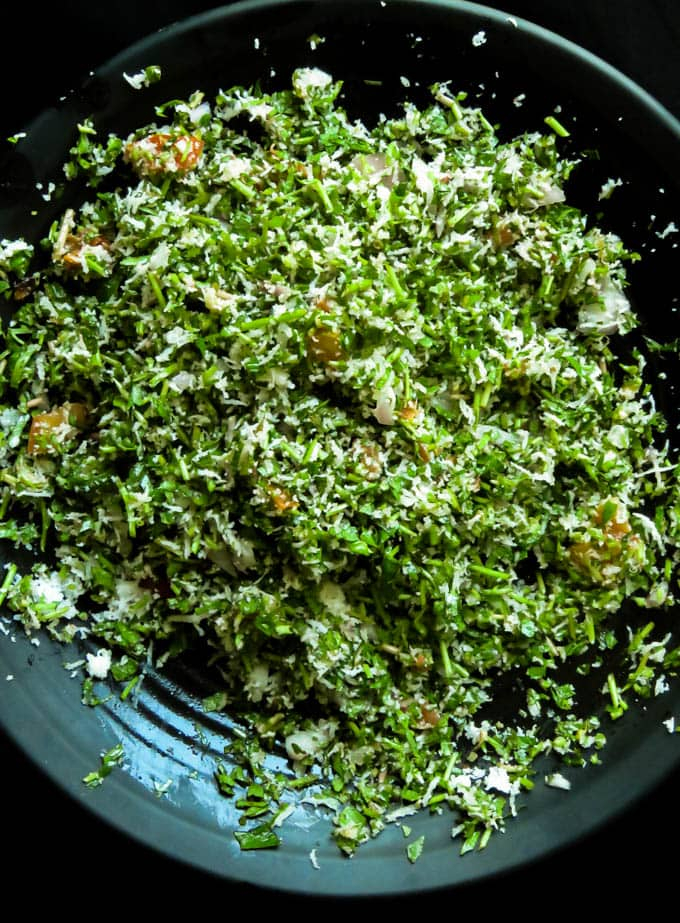
Gotu kola sambol. Photo: islandsmile.org -
Kiri Bath (Milk Rice) is an iconic food that marks Sri Lanka's identity to the world. It is a food that every Sri Lankan is willing to taste. It tastes like milk.
Preparing milk rice is an ordinary Sri Lankan tradition on every auspicious day, like New Year. Before starting any good work, tasting some milk rice has become a tradition in Sri Lanka. It is a symbolic food that marks prosperity and success. Especially on New Year's Day, a pot of coconut milk boils so that the water overflows to mark the prosperity of the new year. Then the same milk is used to make the milk rice, adding the washed rice and a pinch of salt.
Once the rice is well cooked, the traditional way is to put warm milk rice in a banana leaf and then spread it on a banana leaf. Banana leaves also add a characteristic aroma to milk rice.
Soon as it's layered, it is cut into squares/rhombic pieces before serving.
Milk rice will taste better if tasted immediately after cooking before chilling. Usually, the milk rice is served with spicy Lunu Miris, a sambol chutney made with red peppers, onions, lime juice, salt, and sometimes dried Maldive fish, all ground into a paste with a mortar and rock pestle. Alternatively, it can be tasted with banana, jaggery, Maldivian Sambol fish, fried onion curry, etc.
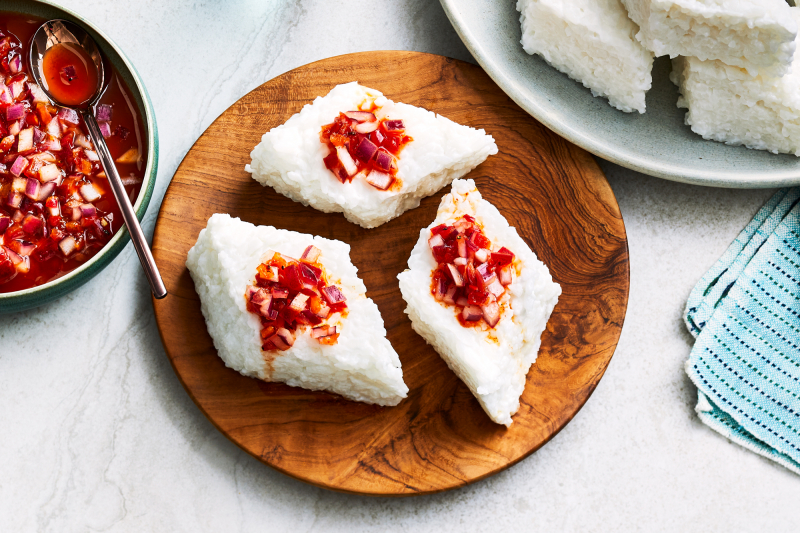
Kiribath with lunu miris. Photo: foodandwine.com 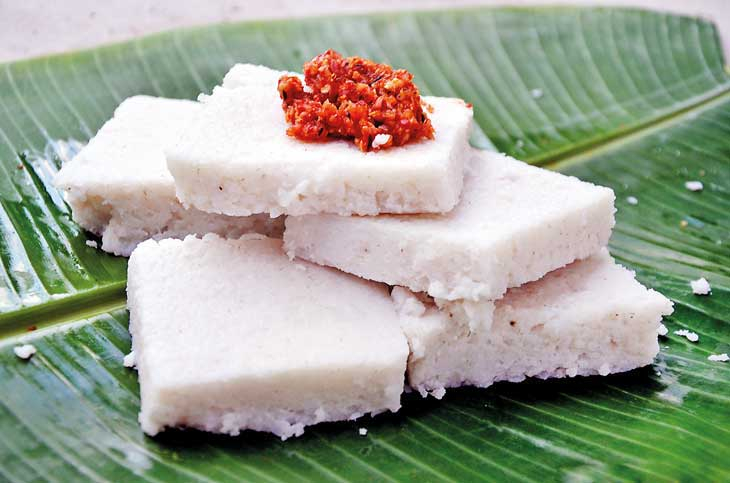
Kiribath with lunu miris. Photo: allceylon.lk -
Pol Sambol / Sambola is a traditional Sri Lankan dish. In Sinahalese, “Pol” means coconut, and “sambol” is a favorite plant. It is made by mixing shredded fresh coconut with onions, peppers, tomatoes, spices, lime juice, and salt. Shredded coconut is obtained by splitting the coconut in half and using a coconut grater to shred the coconut.
In Sri Lanka, a pol sambol is used as a garnish or accompaniment to anything and anything.
Pol Sambola is easy and quick to prepare and can be a side dish in any meal. It goes well with rice and curries, pol roti (coconut roti), a hot piece of paratha, wire choppers, or even just topping with slices of bread. If you love coconuts, there is no better decoration in the world.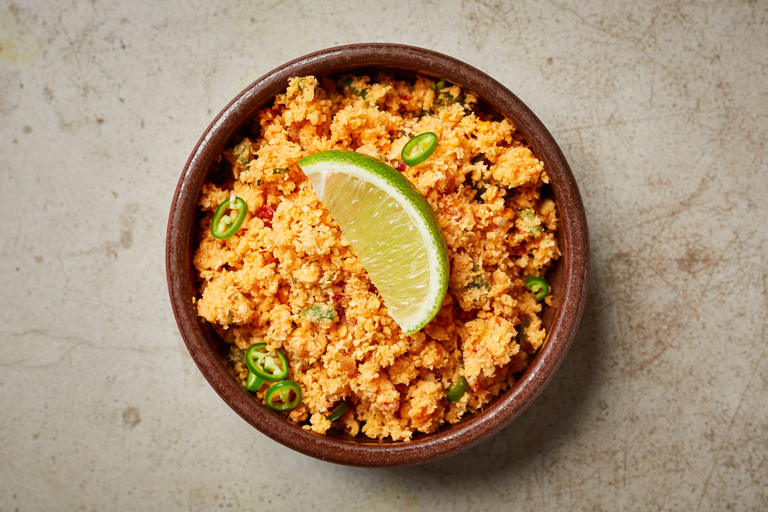
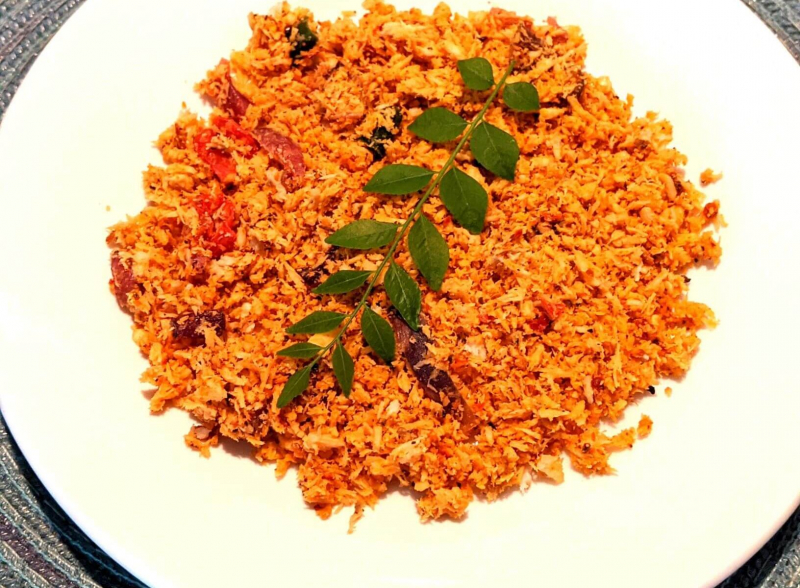
-
There wouldn't be a discussion of Sri Lankan food without wood apples.
Wood apple is a Southeast Asian fruit about the size of a dehulled coconut. It also has an equally hard shell and has an aroma like blue cheese.
Strolling through a market in Sri Lanka, your nose will spot it long before your eyes will. Inside the rind was a dark brown paste resembling something between tamarind pulp and fermented raisins.
Wood apples can be eaten straight from the peel, but one of the most popular ways to eat (or drink) it throughout Sri Lanka is in a thick smoothie known as apple juice.
The fruit is mixed with jaggery (or sugar) and water until smooth. It has a unique sour and sweet taste. Mention that you love the wooden apple to any Sri Lankan you meet, and they probably won't be able to hold back a knowing smile.
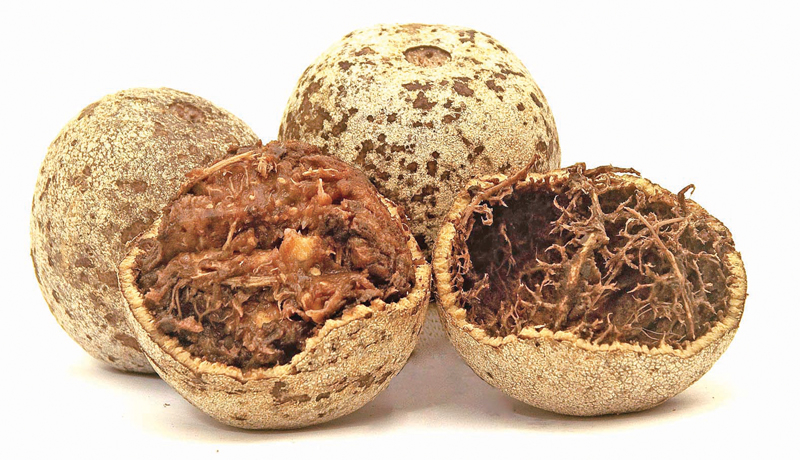
Wood apple. Photo: dailynews.lk 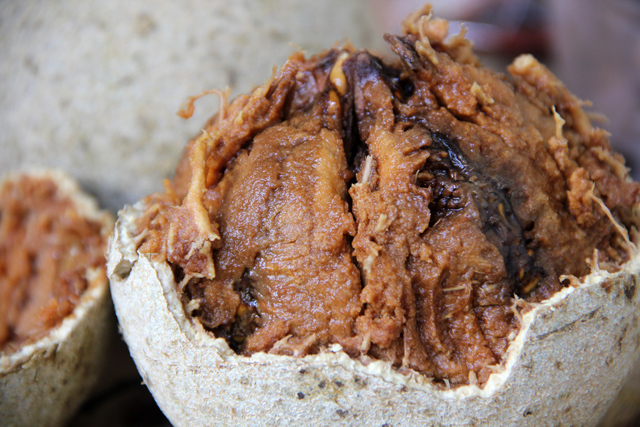
Wood apple. Photo: migrationology.com















